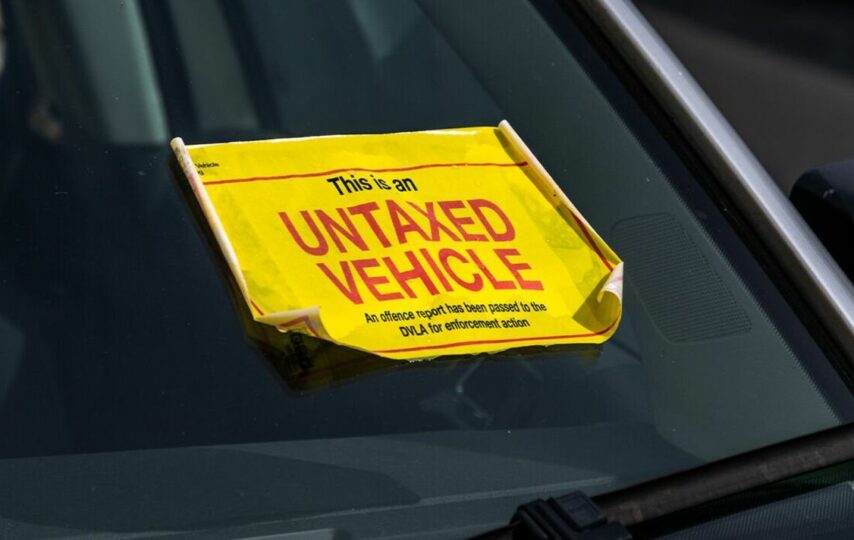In this article, we will cover what happens when you report an untaxed vehicle to the Driver and Vehicle Licensing Agency (DVLA) and why it’s a responsible step to do it so all users of the road contribute their share towards maintaining the infrastructure and promoting safety. This guide will break it down into simple steps, explain what happens when you report an untaxed vehicle, and explain why the DVLA must be notified if you spot an untaxed car.
Here’s what typically happens when you report an untaxed car to the DVLA:
DVLA Verification: Once you report the untaxed vehicle, the DVLA will use the information you provided to verify whether the vehicle is indeed untaxed. They may also check if it has a valid MOT certificate and insurance, as these are additional legal requirements for vehicles in the UK.
Issuing Notices: If the DVLA confirms that the vehicle is untaxed, they will take action. This typically involves sending notices to the registered keeper of the vehicle.
These notices include:
- An initial warning letter: This will inform the registered keeper that their vehicle is untaxed and provide a deadline by which they must tax it or declare it off the Statutory Off Road Notification(SORN).
- Penalty notices: If the registered person doesn’t respond to the letter and continues to keep the vehicle untaxed, the DVLA may issue penalty notices, which include fines.
- Clamping and impoundment: If the vehicle remains untaxed and the penalties haven’t been paid, the DVLA will take action, making it illegal to drive on public roads until all taxes and penalties are paid.
Legal Consequences: Failure to tax the vehicle or respond to DVLA notices can lead to further consequences, including court and removal of the vehicle’s license plates.
Why Report an Untaxed Vehicle?
It’s crucial to understand the importance of reporting an untaxed vehicle before knowing how the process goes.
Vehicle tax, also known as Vehicle Excise Duty (VED), is a legal requirement in the UK. The funds collected from them are used to maintain and improve the road network in the country.
The Reporting Process
The first step you take is gathering all the information. Before you report an untaxed vehicle, get as much information as you can about the vehicle in question.
This includes:
- The vehicle’s license plate.
- The model of the vehicle.
- The location where you observed the untaxed vehicle.
After you collect all of this information, how do you report the vehicle to the DVLA?
Visit the DVLA Website
The DVLA has a website that allows you to report untaxed vehicles online. You can access the website here. Once on the website, click on the “Start Now” button, and you’ll begin the reporting process.
Provide Vehicle Details
You’ll need to enter the vehicle’s registration number. The system will then search for information related to that vehicle, just to confirm that the provided information matches the untaxed vehicle you observed.
Report the Vehicle
Once you’ve confirmed the vehicle details, you’ll be asked to provide all the information you gathered, like the location, the time of your observation, and any additional details that you feel might help DVLA in this investigation.
Submit Your Report
After filling out all the required information, click the “Submit” button. The DVLA will then receive your report for approval and further investigation.
What Happens Next?
Once you’ve reported an untaxed vehicle, the DVLA will take several actions to address the situation:
Verification
The DVLA will verify the information and cross-reference it with their database. This step ensures that the vehicle is indeed untaxed and that there are no errors in the given report.
Issuance of a Warning Letter
In some cases, the DVLA may send a warning letter to the owner, informing them of the report and allowing them to tax their vehicle in a particular timeframe. This letter serves as a first step in rectifying the situation without jumping to the penalties.
Enforcement Action
The DVLA will take further force if the owner doesn’t tax the vehicle or respond to the letter within the timeframe. This may include clamping the vehicle, issuing a fine, or even seizing the untaxed vehicle.
Vehicle Removal
When the vehicle owner repeatedly fails to comply with the tax requirements, the DVLA may remove the untaxed vehicle from the road, through clamping or impoundment.
Penalties
Vehicle owners who fail to tax their vehicles may face penalties, fines, and additional costs. These penalties can accumulate over time. Normally the penalties start at 100 pounds, and if paid in 33 days it’s reduced to 50 pounds. While the maximum penalty can rise up to 1000 pounds.
Conclusion
Reporting an untaxed vehicle to the DVLA is a necessary action to ensure that all road users contribute their fair share to maintain the road network in the UK. By following the simple steps outlined in this guide, beginners can easily report untaxed vehicles, promote road safety, and maintain the quality of the country’s roads. Remember, it’s essential to provide accurate information when reporting to ensure a proper investigation by the DVLA. Your actions can make a significant difference in keeping the roads safe and well-maintained for everyone.








